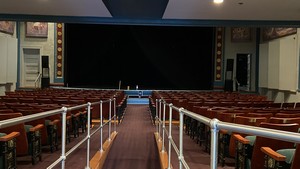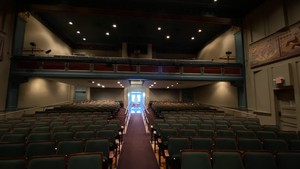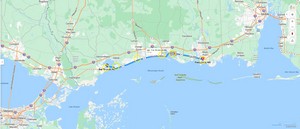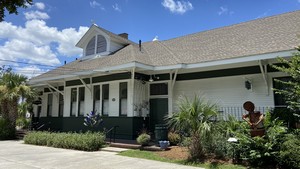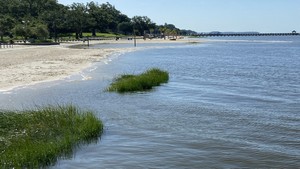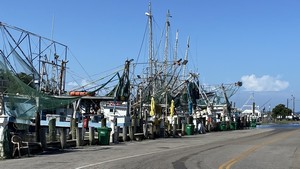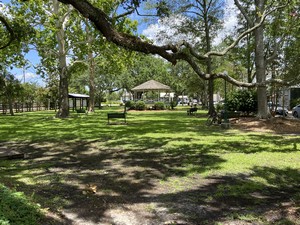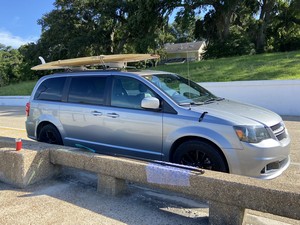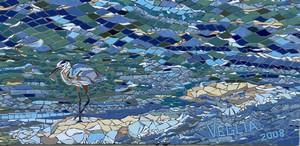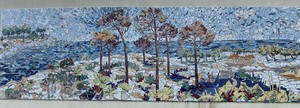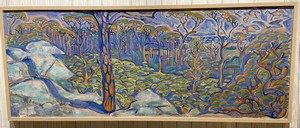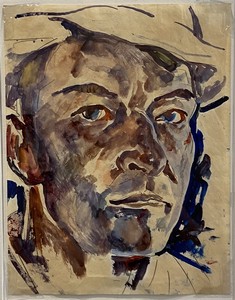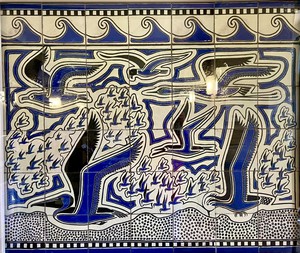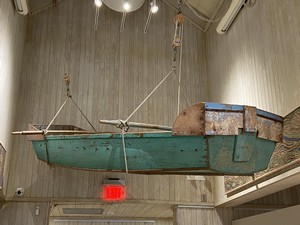We were attracted by the art and mystique of Walter Anderson. And we discovered so much more to enjoy as my wife and I visited Ocean Springs - one of the Six Sisters of the Gulf Coast - in celebration of our anniversary.
The Six Sisters
In times past - city folk of means from New Orleans, Jackson and Mobile sought to escape pre-air-conditioned urban life to spend their summers enjoying sea breezes, “healing” spring waters, and good times along Mississippi’s Gulf coast. Small coastal towns advertised their accommodations, food and drink as Six Sisters grew to be known as Gulf Coast resort towns. Initially served by steam ship, by the 1880’s a railroad line linked New Orleans to Mobile through these towns and locked in their role as coastal resorts. From west to east the towns (now cities) are Bay St. Louis, Pass Christian, Gulfport / Mississippi City, Biloxi, Ocean Springs and Pascagoula. The map below shows these Six Sisters linked by US Highway 90 (part of the Old Spanish Trail,) and they are now of course served indirectly by Interstate 10.

Linked here is a beautiful 360-degree drone view of the waterfront from above Ocean Springs’ Ft. Maurepas City Park. Deer Island can be seen offshore where I camped last year.
Lodging
We stayed at a quaint B&B in the heart of Ocean Springs and largely succeeded, except that most of these boutique inns don’t serve meals. Really, they should be B&I for Bed & Internet. It turned out to not be an issue since there are so many delicious eateries within walking distance, and I assume this is by design. We stayed at the Springs Hotel located on Washington Ave. in the heart of Ocean Springs next to the Walter Anderson Museum. It was within easy walking distance to the shops, restaurants and bars along Washington and Government Streets.
Arts & Culture
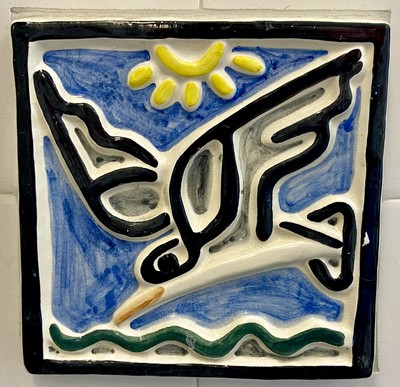
The Anderson family readily admits that Walter was something of a peculiar man. He viewed the world and societal norms differently than most. Anderson passed away in 1965 before receiving any significant notoriety for his art, which took off in the mid 1970s. Anderson loved nature during a time when the hippie movement wanted people to love each other. Anderson’s art reflects this and the time he spent alone in nature - even repeatedly sailing a tiny one-man skiff about 11 miles offshore to Horn Island and even 25 miles offshore to Louisiana’s Chandeleur Islands. Near the time of his death, we were informed that Walter rode out hurricane Betsy while lashed to a tree on Horn Island because he wanted to experience the power of nature. The idea of this invokes so many questions: how did he survive rising storm surge waters? how did he secure his boat? how did he physically recover to endure an 11 mile paddle back to the mainland? He was quite the dude - also canoing down the mighty Mississippi.
I recently spent a night solo camping on nearby Deer Island and enjoyed the solitude, though I wasn’t really alone (there were a couple of other overnight campers on the island) and all night long I could hear the sounds of traffic and trains in Biloxi.
Decades ago I visited West Ship Island by tourist ferry which is a fun and interesting trip. Ship island reportedly served as the “Plymouth Rock” of the Gulf coast due to its natural deep water harbor. It has sandy beaches, clearer Gulf waters, there will be sightings of dolphins in the Mississippi Sound, and a Ship Island trip includes a tour of historic Civil War era Fort Massachusetts maintained by the National Park Service.
Walter Anderson Museum
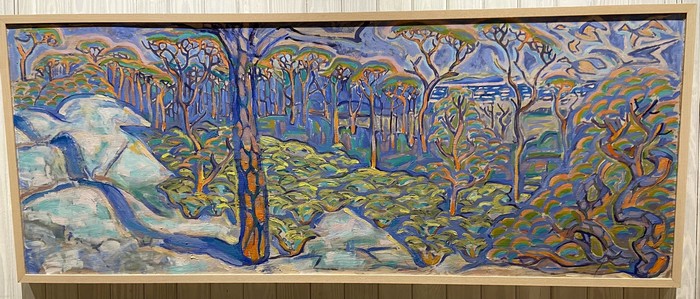
To begin, I’ll endorse this fascinating 15-minute “Mississippi Moments Podcast” by the University of Southern Mississippi’s Center for Oral History & Cultural Heritage interview with Walter Anderson’s nephew John Anderson. He dislikes “museum” in the facility’s name, finding it limiting of the scope and expression of Walter’s works.
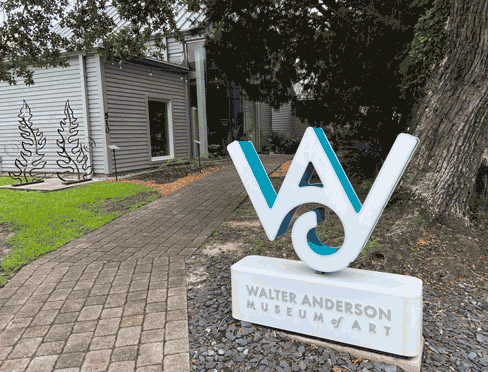
The museum and exhibits within - including the WPA-era murals on the interior walls of the adjacent historic community center - were beautiful and quite remarkable. Each wall features a different theme: regional discovery and settlement featuring d’Iberville; local flora, fauna and landscapes; and other themes. My wife and I enjoyed our visit and the hour-long documentary was interesting. (We sat for most of it.) We found it amusing that Walter donated his services to paint the community center murals and that a strong contingent of the local populace requested them be painted over.
Shearwater Pottery
Shearwater Pottery takes its name from a mis-identified shorebird. This business was also founded by the Anderson family - Walter’s older brother Peter - on property purchased by their mother who arrived from New Orleans and purchased a tract of waterfront property on Biloxi Bay. Walter and his siblings worked in the family business, although Walter’s interests were drawn more towards the natural environment of the coast and expressing it through art. The pottery business was named after the Black Skimmer, misidentified as a Shearwater. Still, the name stuck and even the road shares the name. Fortunately, several species of Shearwater birds do roam the Gulf of Mexico, though as pelagic species they are infrequent visitors to the shore.
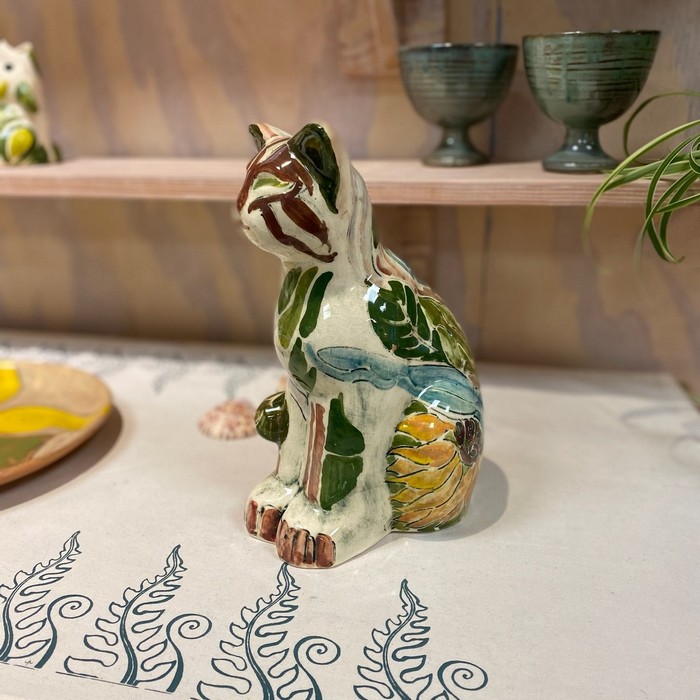
Shearwater Pottery is certainly worth a visit, but they are chronically low on stock for sale. It was explained that the merchandise is so popular the family can’t make it fast enough. (Sure they could outsource production but would then lose authenticity.) While the focus is pottery, there also is some painted artwork and even linens by Anderson family decendants. Many of the most interesting pieces are not for sale but are on exhibit in a museum room.
The “Mary C”
The Mary C. O’Keefe Cultural Arts Center occupies the historic high school building on Government Street just east of the core business and entertainment district in Ocean Springs. The center includes galleries, a history museum and performance space for regularly scheduled events.
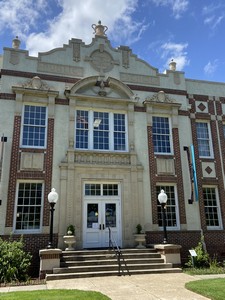
While we did get to walk through the building, our visit coincided with a transition of the galleries so we did not get to see the collections.
Ohr-O’Keefe Museum of Art
Across Biloxi Bay at Kuhne Street in Biloxi is the Ohr-O’Keefe Museum of Art. Portions of the facility were designed by Frank Gehry, while the O’Keefe family were benefactors. The museum displays works of another local potter George Ohr - the “Wild Potter of Biloxi” - who predated Peter Anderson’s business at Shearwater. The architecture of the facility is remarkable and many of the exhibits were quite interesting. Surprisingly to me, many of the exhibits are of Gehry’s architectural work including very rough sketches, 3D models of proposed projects, and some other of his artwork. As I have been through considerable architectural-type education through my degree at LSU, I was more impressed and interested in Ohr’s pottery than in Gehry’s extremely rough sketches…
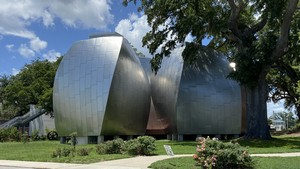
Charnley-Norwood House
Further east beyond Shearwater Pottery is the Bon Silene cottage residence designed in 1890 by Louis Sullivan aided by his employee, a young Frank Lloyd Wright. It was a vacation residence for Chicago lumber magnates: Charnley and later Norwood. The home burned and was rebuilt in 1897 to the original design by Norwood with Sullivan’s direction. More recently, hurricane Katrina damaged the house. It was then purchased by the State and restored in 2013. We never made it this far east to view the house, and doing so also requires pre-planning to schedule a tour. Contact info is provided below.
See the Mississippi Gulf Coast National Heritage Area to schedule a free tour. [email protected] | 228-234-7298.
Front Beach
The first evening we drove the length of Front Beach, parking briefly at the Yacht Club to walk over and investigate the tile art by mosaic artist Elizabeth Veglia located along the walkway at the foot of the Ocean Springs side of the new Biloxi Bay bridge. These mosiacs are remarkable!

While driving around the beachfront we were surprised to see the temporary closure of several local roads - including the foot of Washington Street - due to high tides causing the streets to flood. I’m curious for how long this has been an issue. We did visit during the cycle of a full moon.
Another scenic area was the public boat launch and Ocean Springs Harbor with all of the pleasure yachts, sail boats and working craft in the seafood industry moored along the docks.
Food
Dinner at Maison de Lu was delicious, and for the price it should be. I’ve had better service at nice restaurants in Baton Rouge and New Orleans, but it wasn’t bad. It was just that the restaurant is very small, and the wait staff were focused on the tables of larger parties rather than our little 2-top.
The following morning we very much enjoyed brunch at The Lady May where both the food and the service were excellent and more affordable.
During the heat of Thursday afternoon we stopped by Pop Brothers Ice Pops on Government Street to enjoy a treat. I made the right decision to get a fruit and cream pop. My wife got a fruit and lemonade pop which was just too tart to be as enjoyable. I erroneously assumed the pops were made on-site. This is not the case.
Outdoors
After rising Thursday morning and while my wife continued to sleep, I drove down to Front Beach and launched my paddleboard for the first time in salt water. (Okay, it is brackish water.) I paddled just over a mile round-trip, from an area where the sand beach was narrow near the Yacht Club east to beyond the Chester McPhearson Pier and back. Boat traffic was at a minimum but wind gusts were beginning to pick up and I had to focus to keep my balance. On the return trip I was joined by a pair of curious porpoises who were investigating me for a hundred yards or so.

Davis Bayou Campground is part of the Gulf Islands National Seashore administered by the National Park Service. We drove over to scout out the campground for possible future visits. What we discovered is sad but typical of campgrounds these days - it caters almost exclusively to trailered or motor-home campers. Most of the sites - practically all of them in the areas featuring shade trees - are tiny and have no level ground aside from the asphalt camper space. I’m a tent camper, and few sites here would be suitable. Most that are tent-appropriate are in the open field and have no sun protection or privacy.
Otherwise, the surrounding park and views of Davis Bayou are beautiful and would be a fun visit. Fees are just $22 per night and all sites have electric service. Gulf Coast Heritage Passport stamp booklets are NOT available at the William M. Colmer Visitor Center within Davis Bayou park - which is contrary to what is published on the NPS website. If you’re interested in the NPS Passport program you’ll need to purchase a booklet from Amazon - or at the single NPS store located at Ft. Pickens in Pensacola, Florida.
Across the bayou from the campground and located at the end of E Beach Drive is the Gulf Coast Research Lab - part of the University of Southern Mississippi marine sciences. We didn’t get to visit this but it sure seems interesting. I’m not clear whether there is any publicly accessible museum or welcome center. I believe it is all research and education.
Drive Home
We concluded our overnight trip with a drive home along scenic US 90 along the beachfront of Biloxi, Gulfport, Long Beach, Pass Christian, and Bay St. Louis. My wife lamented the loss of so many beautiful homes from Katrina. The new developments are encouraging economically, but most lack the charm of the now lost architecture. We stopped for a late lunch at Bacchus on the Beach overlooking scenic Pass Christian Harbor. The burger and crab cake sandwiches there were great, and I feel like I saw Otis Redding sitting on the dock of the bay!
Gallery
Click a thumbnail to enlarge the image, or view as a slideshow.
